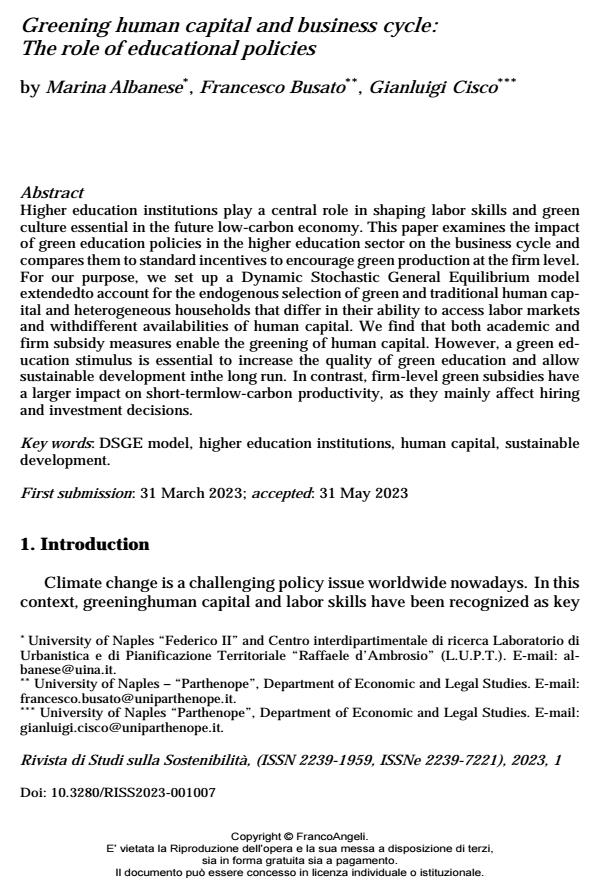Greening human capital and business cycle: The role of educational policies
Journal title RIVISTA DI STUDI SULLA SOSTENIBILITA'
Author/s Marina Albanese, Francesco Busato, Gianluigi Cisco
Publishing Year 2023 Issue 2023/1
Language English Pages 10 P. 129-138 File size 139 KB
DOI 10.3280/RISS2023-001007
DOI is like a bar code for intellectual property: to have more infomation
click here
Below, you can see the article first page
If you want to buy this article in PDF format, you can do it, following the instructions to buy download credits

FrancoAngeli is member of Publishers International Linking Association, Inc (PILA), a not-for-profit association which run the CrossRef service enabling links to and from online scholarly content.
Higher education institutions play a central role in shaping labor skills and green culture essential in the future low-carbon economy. This paper examines the im-pact of green education policies in the higher education sector on the business cy-cle and compares them to standard incentives to encourage green production at the firm level. For our purpose, we set up a Dynamic Stochastic General Equilibrium model extended to account for the endogenous selection of green and traditional human capital and heterogeneous households that differ in their ability to access labor markets and with different availabilities of human capital. We find that both academic and firm subsidy measures enable the greening of human capital. How-ever, a green education stimulus is essential to increase the quality of green educa-tion and allow sustainable development in the long run. In contrast, firm-level green subsidies have a larger impact on short-term low-carbon productivity, as they main-ly affect hiring and investment decisions.
Keywords: DSGE model, higher education institutions, human capital, sustaina-ble development.
Marina Albanese, Francesco Busato, Gianluigi Cisco, Greening human capital and business cycle: The role of educational policies in "RIVISTA DI STUDI SULLA SOSTENIBILITA'" 1/2023, pp 129-138, DOI: 10.3280/RISS2023-001007